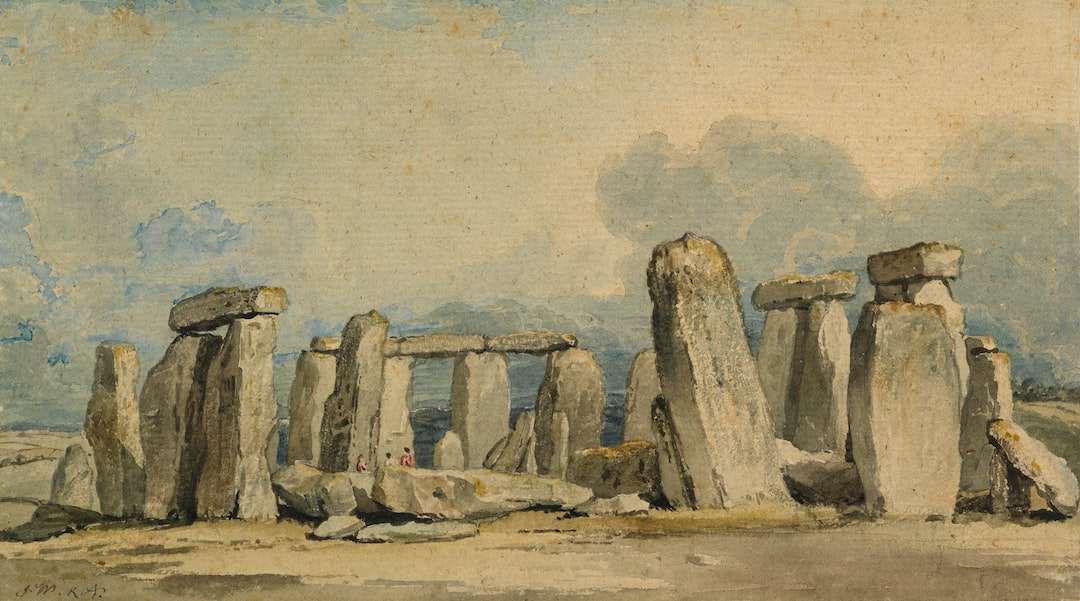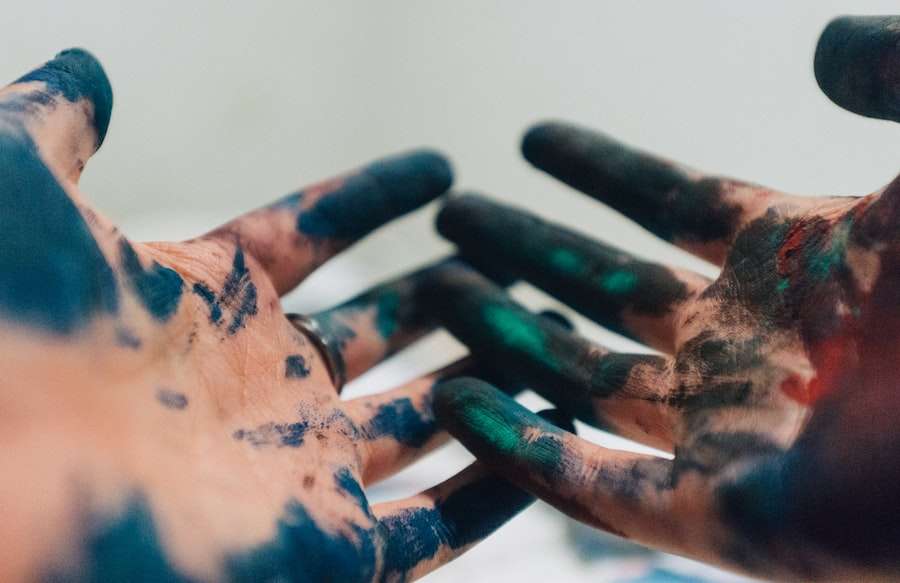Exploring Symbolism in Literature and Art

Colors have always played a significant role in both literature and art. They have the power to evoke emotions, convey meaning, and enhance the overall aesthetic experience. From the vibrant hues of a painting to the carefully chosen words in a novel, colors have the ability to captivate and engage the audience. In this blog post, we will explore the various aspects of color symbolism in literature and art, the significance of color in artistic expression, the psychology of color and emotions, the cultural meanings of colors in different societies, the use of color symbolism in religious art and literature, the impact of color on branding and marketing, the evolution of color symbolism in history, the intersection of color and identity in literature and art, and finally, the future of color symbolism in artistic expression.
The Role of Color Symbolism in Literature
Color symbolism refers to the use of colors to represent ideas, emotions, or concepts in literature. It adds depth and complexity to a story by creating visual imagery that resonates with readers. For example, the color red is often associated with passion, love, or anger, while blue is often associated with calmness or sadness. In F. Scott Fitzgerald’s “The Great Gatsby,” the color green is used to symbolize wealth and envy. The green light at the end of Daisy’s dock represents Gatsby’s longing for wealth and social status.
Colors can also be used to create contrast or highlight certain aspects of a story. In Nathaniel Hawthorne’s “The Scarlet Letter,” the color red is used to symbolize sin and shame. The scarlet letter that Hester Prynne is forced to wear serves as a constant reminder of her transgression. The use of color symbolism in literature allows authors to convey complex ideas and emotions in a concise and powerful way.
The Significance of Color in Artistic Expression
In art, colors are used to create visual impact and evoke emotions. Artists carefully choose their color palette to convey a specific mood or atmosphere. For example, warm colors like red, orange, and yellow can create a sense of energy and excitement, while cool colors like blue and green can create a sense of calmness and tranquility. Artists also use color to create depth and perspective in their artwork. By using lighter colors in the foreground and darker colors in the background, they can create the illusion of space.
Famous artworks throughout history have effectively used color to convey meaning and emotion. Vincent van Gogh’s “Starry Night” is a prime example of how color can evoke emotions. The vibrant blues and yellows in the painting create a sense of movement and energy, while the dark blues in the sky convey a sense of tranquility and mystery. Similarly, Pablo Picasso’s “Guernica” uses a monochromatic color scheme of black, white, and gray to convey the horrors of war.
The impact of color on the viewer’s emotions cannot be underestimated. Colors have the power to elicit strong emotional responses and can greatly influence how we perceive and interpret artwork.
The Psychology of Color and Emotions
Colors have a profound effect on our emotions and can elicit different responses depending on the individual. This is known as color psychology. Different colors are associated with different emotions and can evoke specific feelings or moods.
For example, red is often associated with passion, love, or anger. It can increase heart rate and blood pressure, creating a sense of excitement or intensity. Blue, on the other hand, is often associated with calmness or sadness. It has a soothing effect on the mind and body and can create a sense of tranquility.
Artists and writers are aware of these psychological effects of color and use them to their advantage when creating impactful works. They carefully choose their color palette to elicit specific emotions or create a certain atmosphere. By understanding the psychology of color, artists and writers can create a more immersive and engaging experience for their audience.
Cultural Meanings of Colors in Different Societies
Colors can have different meanings and associations in different cultures. In some societies, certain colors may be considered lucky or sacred, while in others they may be associated with negative connotations. For example, in Western cultures, white is often associated with purity and innocence, while in some Eastern cultures it is associated with death and mourning.
The interpretation of colors in art and literature can vary greatly depending on the cultural context. For example, the color red is often associated with luck and prosperity in Chinese culture, while in Western cultures it is often associated with passion or danger. This cultural variation adds another layer of complexity to the use of color symbolism in artistic expression.
The Use of Color Symbolism in Religious Art and Literature

Religious art and literature often use color symbolism to convey spiritual or symbolic meanings. Different religions have their own unique color symbolism. For example, in Christianity, the color white is often associated with purity and divinity, while the color purple is associated with royalty and penance.
In Hinduism, different gods and goddesses are associated with specific colors. For example, Lord Krishna is often depicted as having blue skin, which represents his divine nature. In Buddhism, the color yellow is often associated with enlightenment and wisdom.
The use of color symbolism in religious art and literature helps to convey complex theological concepts and create a deeper spiritual experience for the viewer or reader.
The Impact of Color on Branding and Marketing
Colors play a crucial role in branding and marketing. Companies carefully choose their brand colors to convey their message and create a certain perception in the minds of consumers. For example, fast-food chains often use red and yellow in their logos and branding to create a sense of urgency and excitement. Blue is often used by technology companies to convey trust and reliability.
The psychology behind color choices in branding and marketing is based on the emotional responses that different colors elicit. By understanding the impact of color on consumer behavior, companies can create a strong brand identity and effectively communicate their message to their target audience.
The Evolution of Color Symbolism in History
Color symbolism has evolved over time and has been influenced by changes in society and culture. Different historical periods have had their own unique color symbolism. For example, during the Renaissance, the color blue was associated with the Virgin Mary and was often used to represent her purity and divinity. In the Victorian era, black was associated with mourning and was often worn by widows.
The evolution of color symbolism reflects changes in societal values, beliefs, and cultural norms. It also reflects advancements in technology and the availability of different pigments. As new colors were discovered or became more accessible, they were incorporated into artistic expression and given new symbolic meanings.
The Intersection of Color and Identity in Literature and Art
Color is often used to represent identity in literature and art. Different groups use color to symbolize themselves and create a sense of belonging or solidarity. For example, the LGBTQ+ community often uses the rainbow flag as a symbol of diversity and inclusivity. The different colors in the flag represent different aspects of the community.
Similarly, different racial or ethnic groups may use specific colors to represent their identity. For example, in African American culture, the color black is often associated with strength, resilience, and cultural pride.
The use of color to represent identity in literature and art allows marginalized groups to reclaim their narratives and challenge dominant narratives that may be oppressive or exclusionary.
The Future of Color Symbolism in Literature and Artistic Expression
As technology advances and globalization continues to shape our world, color symbolism in literature and art is likely to evolve. New colors may be discovered or created, and their symbolic meanings may change or expand. The use of color in virtual reality and augmented reality experiences may create new possibilities for artistic expression.
The globalization of art and literature also means that different cultural meanings of colors will continue to intersect and influence each other. Artists and writers will have access to a wider range of color symbolism, allowing for more diverse and inclusive representations.
In conclusion, the power of colors in literature and art cannot be underestimated. Colors have the ability to evoke emotions, convey meaning, and enhance the overall aesthetic experience. From the use of color symbolism in literature to the impact of color on branding and marketing, colors play a crucial role in artistic expression. By understanding the psychology of color, the cultural meanings of colors, and the intersection of color and identity, artists and writers can create more impactful and meaningful works. As we look to the future, the evolution of color symbolism in literature and art will continue to shape our understanding of the world around us.
If you’re interested in exploring the fascinating world of color symbolism in literature and art, you may also enjoy reading about the symbolism of the sun. The sun has been a powerful symbol throughout history, representing various concepts such as life, energy, and enlightenment. To delve deeper into this topic, check out this insightful article on Symbolism Hub: Symbolism of the Sun. Discover how different cultures and artists have interpreted the sun’s symbolism and how it has influenced their works.
FAQs
What is color symbolism?
Color symbolism is the use of colors to represent ideas, emotions, and concepts in literature and art.
What are some common color symbols?
Some common color symbols include red for passion or anger, blue for sadness or calmness, green for growth or envy, yellow for happiness or cowardice, and black for death or evil.
How is color symbolism used in literature?
Color symbolism is used in literature to convey deeper meanings and emotions. For example, the color red may be used to represent love or anger, depending on the context.
How is color symbolism used in art?
Color symbolism is used in art to create mood and convey meaning. For example, a painting with predominantly blue tones may create a sense of calmness or sadness.
What are some examples of color symbolism in literature?
Some examples of color symbolism in literature include the use of green to represent jealousy in Shakespeare’s “Othello” and the use of white to represent purity in Nathaniel Hawthorne’s “The Scarlet Letter.”
What are some examples of color symbolism in art?
Some examples of color symbolism in art include Vincent van Gogh’s use of yellow to represent happiness and Paul Cézanne’s use of blue to create a sense of depth and distance in his landscapes.





